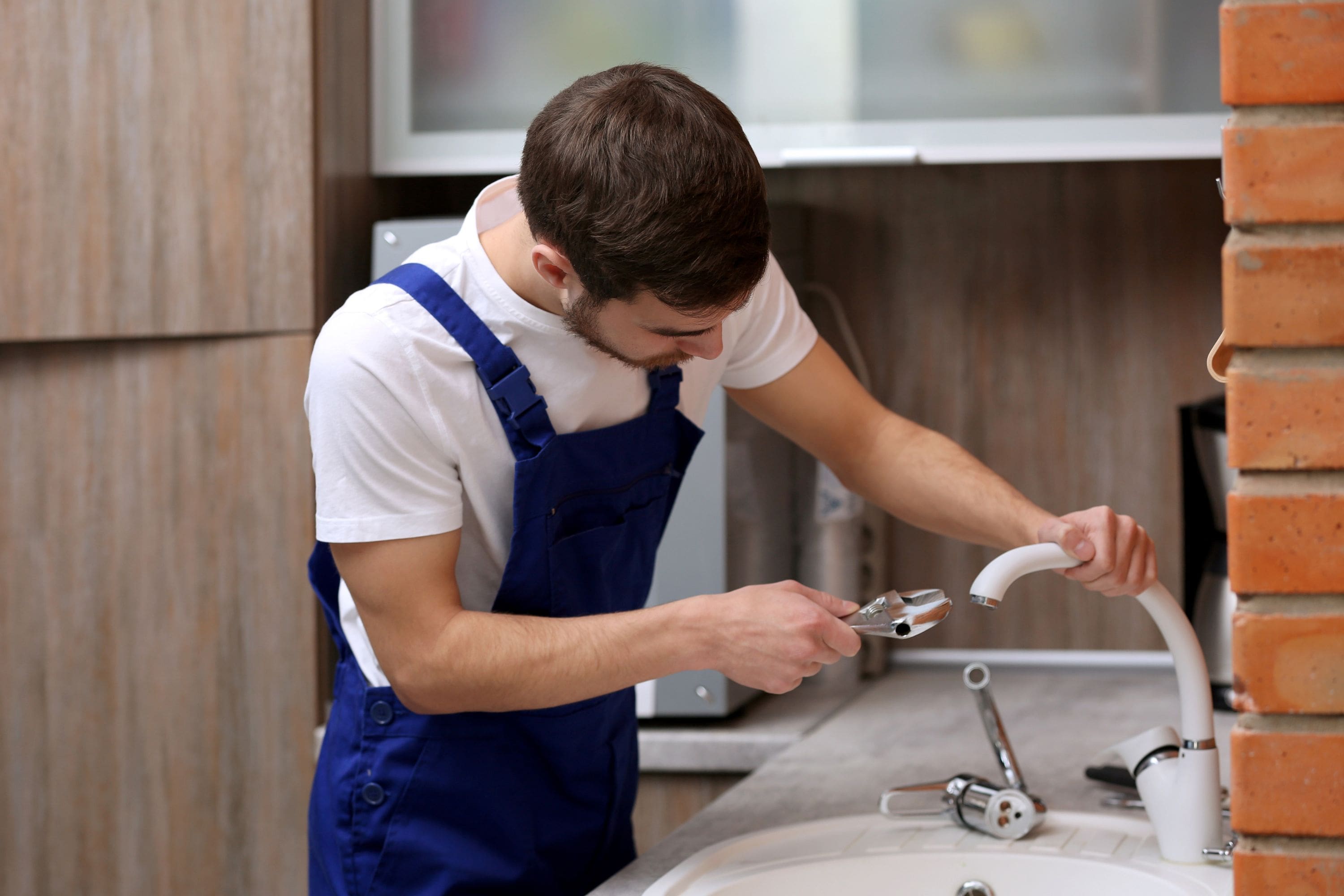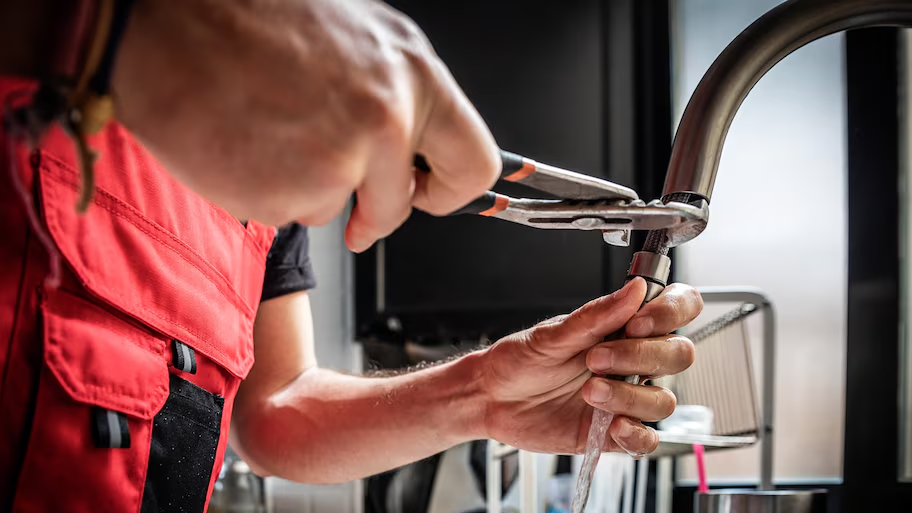Our Factors Behind Correcting a Faulty Faucet
Our Factors Behind Correcting a Faulty Faucet
Blog Article
Do you find yourself looking for additional info around How to Fix a Dripping or Leaky Faucet ?

Leaking taps could feel like a small inconvenience, but their impact exceeds just the inconvenience of the audio. From drainage to sustaining unnecessary monetary costs and health and wellness risks, ignoring a leaking faucet can bring about numerous consequences. In this post, we'll look into why it's essential to address this common household issue without delay and successfully.
Waste of Water
Environmental Influence
Leaking faucets add significantly to water wastefulness. According to the Environmental Protection Agency (EPA), a solitary faucet trickling at one drip per second can waste greater than 3,000 gallons of water per year. This not just strains water resources yet likewise influences environments and wild animals based on them.
Step-by-Step Overview to Fixing a Dripping Tap
Devices Required
Before trying to fix a leaking tap, collect the necessary tools, consisting of a flexible wrench, screwdrivers, replacement parts (such as washers or cartridges), and plumber's tape.
Common Faucet Issues and Their Solutions
Determine the kind of tap and the certain concern creating the drip. Common problems include worn-out washers, corroded shutoff seats, or faulty O-rings. Refer to manufacturer instructions or on the internet tutorials for detailed support on repair services.
Financial Expenses
Enhanced Water Bills
Beyond the ecological influence, leaking faucets can inflate water costs considerably. The collected wastage over time converts right into greater utility expenditures, which might have been avoided with prompt repair services.
Potential Home Damages
Additionally, prolonged trickling can result in harm to fixtures and surface areas bordering the tap. Water build-up can cause staining, rust, and even architectural concerns if left ignored, causing additional fixing expenses.
Health Concerns
Mold and Mildew Growth
The consistent visibility of moisture from a leaking tap develops a suitable setting for mold and mildew growth. These fungis not just endanger indoor air high quality yet additionally posture health risks, particularly for individuals with breathing conditions or allergies.
Waterborne Diseases
Stagnant water in trickling taps can come to be a breeding place for germs and other pathogens, increasing the threat of waterborne illness. Pollutants such as Legionella bacteria grow in stationary water, potentially resulting in serious ailments when consumed or inhaled.
Do it yourself vs. Expert Repair
Pros and Cons of DIY Fixing
While some may try to repair a dripping faucet themselves, do it yourself repair work feature their own collection of challenges. Without correct knowledge and devices, do it yourself attempts can worsen the concern or result in incomplete repair services, prolonging the problem.
Advantages of Working With a Professional Plumber
Employing an expert plumber makes certain that the underlying cause of the dripping faucet is attended to properly. Plumbers possess the competence and devices to detect and fix faucet issues efficiently, saving time and minimizing the risk of further damage.
Ecological Duty
Specific Payment to Conservation
Taking obligation for repairing dripping taps straightens with wider efforts towards water conservation and environmental sustainability. Every person's actions collectively make a substantial effect on preserving priceless sources.
Sustainable Living Practices
By focusing on prompt fixings and embracing water-saving behaviors, individuals contribute to lasting living methods that benefit both existing and future generations.
Safety nets
Regular Upkeep Tips
To prevent leaking taps, perform regular maintenance such as cleaning up aerators, inspecting for leaks, and replacing damaged components promptly. Furthermore, think about mounting water-saving tools or updating to more efficient fixtures.
Significance of Prompt Fixes
Attending to trickling taps as quickly as they're observed stops additional water waste and potential damage, inevitably conserving both water and cash over time.
Impact on Home Value
Assumption of Well-Maintained Building
Maintaining a home in good condition, including attending to maintenance concerns like leaking taps, improves its regarded value and worth among possible buyers or occupants.
Influence on Resale Value
Properties with properly maintained plumbing fixtures, consisting of faucets, command higher resale worths in the property market. Dealing with leaking taps can add to a positive perception throughout building evaluations and arrangements.
Conclusion
Attending to a dripping faucet exceeds simple comfort; it's an essential step towards preserving water, reducing financial prices, and guarding health and home. Whether via do it yourself fixings or professional assistance, taking action to repair trickling taps is a tiny yet impactful means to advertise liable stewardship of sources and add to a healthier, much more sustainable future.
How to Fix a Leaky Faucet: Step-by-Step Repair Guide
A leaky faucet may seem like a simple annoyance, but if it's not fixed promptly, that leak could cost hundreds to potentially thousands. From water damage to mold, mildew, and high water bills, even a tiny leak can be catastrophic if left unattended. Damage like this can even affect the overall value of your home, so it's important to take the right approach for leaky faucet repair. You may need the help of a plumber in some cases, but we've got a few tips you can try on how to fix a leaky faucet before calling the pros.
Four Faucet Types
When you're learning how to fix a leaky faucet, the first step is knowing what kind of faucet you're working with! There are four common types.
Cartridge Faucets
Cartridge faucets come in one- or two-handled varieties. In one-handled cartridge faucets, hot and cold water combines in a single cartridge. In the two-handled versions, hot and cold water are controlled separately and mixed in the faucet.
Ball Faucets
Ball faucets have a single lever you push up and down to adjust the pressure and rotate to change the temperature. A slotted metal ball controls the amount of water allowed into the spout.
Compression Washer Faucets
They're the oldest type of faucet, but they're still used in many homes — especially older ones. Compression faucets have two separate handles that, when turned, raise or lower the washer that seals a water valve. This valve stops water from flowing through the faucet when it is turned off.
Disc Faucets
Disc faucets rarely need to be repaired due to their maintenance-free design. The water flow is controlled by two discs — the upper one raises and lowers against a fixed lower disc, creating a watertight seal. If your disc faucet starts leaking, you may need to replace the seals or clean residue buildup from the inlets.
Fixing a Leaky Faucet
Step 1: Turn Off the Water
Whether you're learning how to fix a leaky bathtub faucet or how to fix a leaky kitchen faucet, always turn off the water supply to your working area when you're fixing a leak. The last thing you want is a flood added to your list of things to fix.
Look for the shutoff valves below your sink or around the tub and turn them clockwise to stop the water flow. If your faucet doesn't have shutoff valves, you may need to turn off the water for the whole house. Check to make sure it's off by turning the faucet on. If nothing comes out, you're ready to start the repair.
Step 2: Take Apart the Faucet
How you disassemble your faucet depends on the type of fixture you have. You can use a flathead screwdriver to remove the caps on top of the handle or handles for cartridge and compression faucets. Inside, you should see handle screws. Unscrew these with a screwdriver to remove the handle.
Disc- and ball-style faucets will typically have an inlet screw near the handle, and removing that will reveal the interior of the faucet.
Detach the Valve Stem
For cartridge- and compression-style faucets, you'll see the inner valve stem or cartridge once you remove the faucet handles. If you have a compression faucet, unscrew the brass valve stem. If you have a cartridge faucet, pull out the cartridge. If your cartridge has been in place for a while, it may require some tools or extra force to remove it due to mineral deposits.
Examine and Replace Parts
Once you've removed the parts, check them out to confirm what needs to be replaced. You may see corroded rubber washers, O-rings, stems, or cartridges. On a ball-style faucet, check the seats and springs for damage.
If you need to repair a leaky disc faucet, check the inlet and seals on the lower disc.
Once you determine what parts must be replaced, visit your local hardware store. Bring the damaged parts with you to ensure you can purchase the correct components to replace them.
Clean Valves and Faucet Cavity
If you've removed a stem or cartridge, you may notice mineral buildup in the faucet's threads. Use white vinegar to clean the valve seat by soaking it for a few minutes, then scrub it away with a soft toothbrush and rinse with warm water. You can also clean the interior of the faucet in the same way.
Reassemble the Faucet
Once your faucet is cleaned and the required parts have been replaced, it's time to reassemble it. Put the pieces back together and slowly turn the water supply back on. Doing this slowly is crucial because too much initial water pressure can damage the new hardware you've just installed.
https://homewarranty.firstam.com/blog/how-to-fix-leaky-faucet

I ran across that content on Why It's Important to Fix Leaky Faucets while doing a search on the internet. If you appreciated our article plz remember to pass it around. Thanks for being here. Come back soon.
Report this page